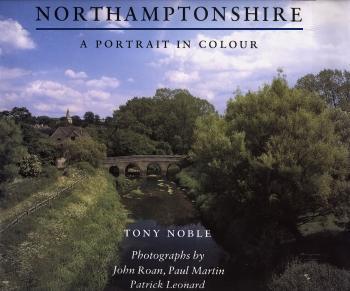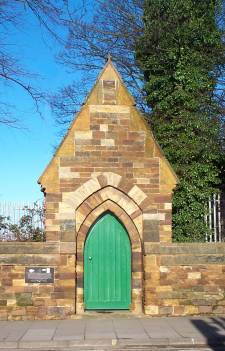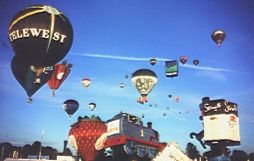 |

 |
 |
 |
Northampton has a long and chequered history, and where better to get all the facts about
Northampton and the surrounding area than the most knowledgeable local author on the
subject, Tony Noble. The following information about Northampton has been sourced from Tony's
excellent book "Northamptonshire, a Portrait in Colour", which incidentally you can buy via
us cheaper than anywhere else on the Internet. You can request a signed copy if you'd like one,
which no other site can offer. It also contains a fantastic range of colour pictures on interesting
places and scenes from around the County.
 |
|
Northamptonshire, a Portrait in Colour |
Northampton is situated on the North side of the river Nene in the heart of England. Being
so close to the middle of England
its position made Northampton nationally important. The Saxons first settled in the area
in about 650 AD, gradually building a town later to be 'sacked' by the Vikings. By 1066,
the date of the Norman Conquest the town had been rebuilt and it became an administrative
centre for the Midlands region. Although no longer in existence it was at this time that the
Castle was erected.
In terms of the layout of the town, not much has changed since those times, although none
of the medieval walls or structures exist still today. Much was destroyed by the Great Fire
of 1675 that swept through the heart of the town leaving only the Welsh House in Market Square,
and part of All Saints church.
 |
The Postern Gate
All that remains of Northampton Castle
Picture Copyright C. Skinner
|
Thomas a Becket was put on trial at Northampton Castle by Henry II in 1164 and it was also at
the Castle that the Parliament met during the 12th Century. Other notable events include the
Battle of Northampton in 1460 during the War of the Roses when Henry VI defeated Edward, Earl
of March. Although soon after the Civil War, Oliver Cromwell ordered the destruction of the Castle and
Town Hall.
Northampton was saved from obscurity due to the re-emergence of one of its long standing
traditional industries, boot and shoe making. Indeed both had been made in the Town for
Centuries and it was Cromwell's army that marched to the Battle of Naseby shod in boots
made in Northampton. The arrival of the Industrial Revolution revided Northampton's
fortunes and the Town expanded rapidly during the 19th Century as a result. The industry
has since fallen into decline, with few manufacturer's remaining today although there are
stll reminders of the Town's past glories about today, celebrated by the local football
team who still bear the nickname of 'The Cobblers'.
More recently the Town has seen expansion through the opening of distribution centres, and its
geographical location and proximity to major road networks are playing a major role in the
creation of new jobs.
 |
Northampton Balloon Festival
Picture Copyright C. Skinner
|
Northampton, is conveniently situated in the middle of England's tourist locations. Stratford
is about 40 miles North West, Oxford 45 miles South West and Cambridge about 50 miles to the East.
Birmingham is about the same distance to the North and London about 70 miles to the South.
The British Formula 1 championship takes place each year a few miles to the South West in Silverstone,
and each year Northampton hosts one of the largest hot air Balloon festivals in England at a central park
that used to be the Racecourse. There are also parks to enjoy and museums to view and great
countryside only a few minutes from town centre.
|
| |
 |
 |
 |
|



